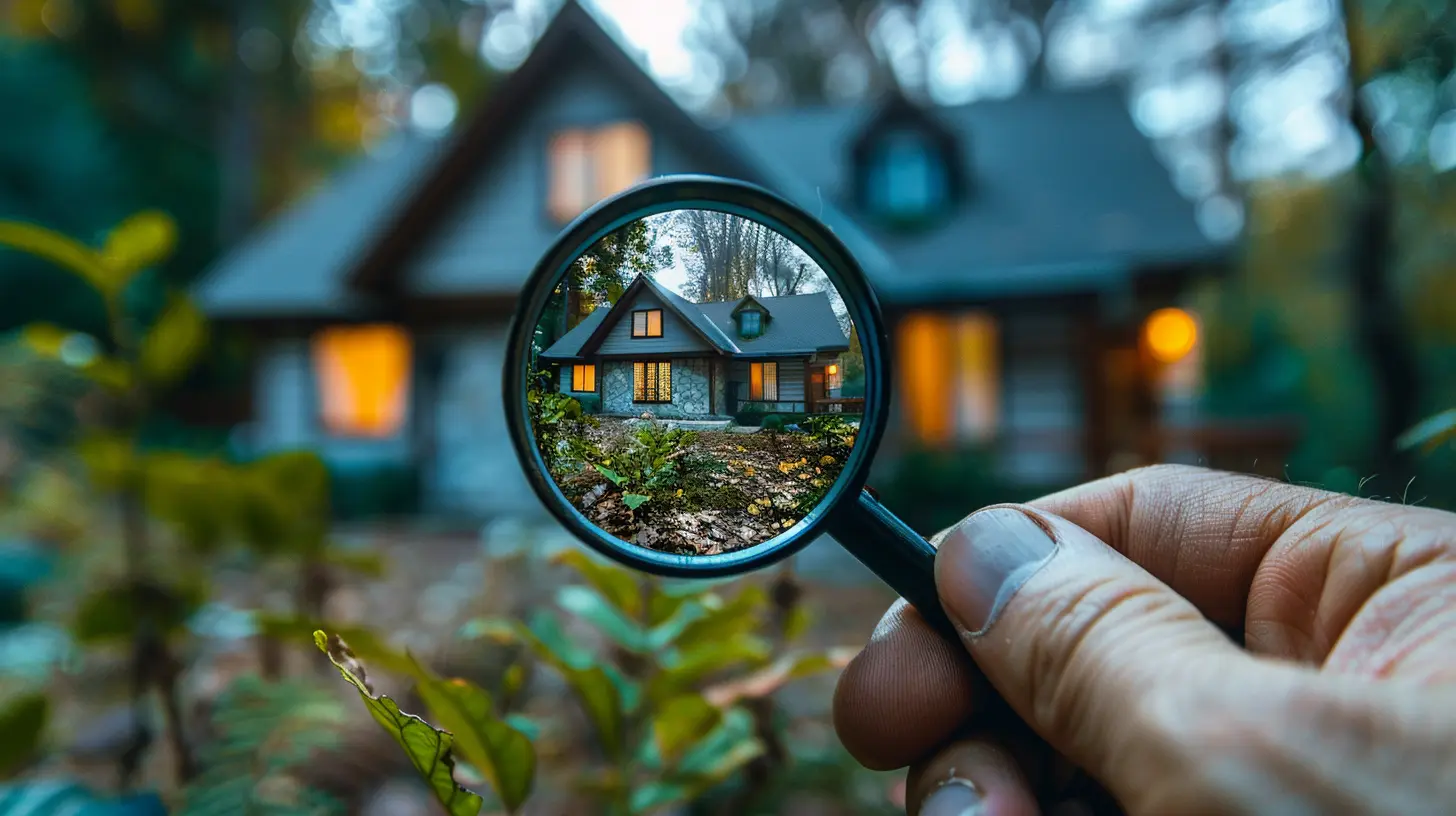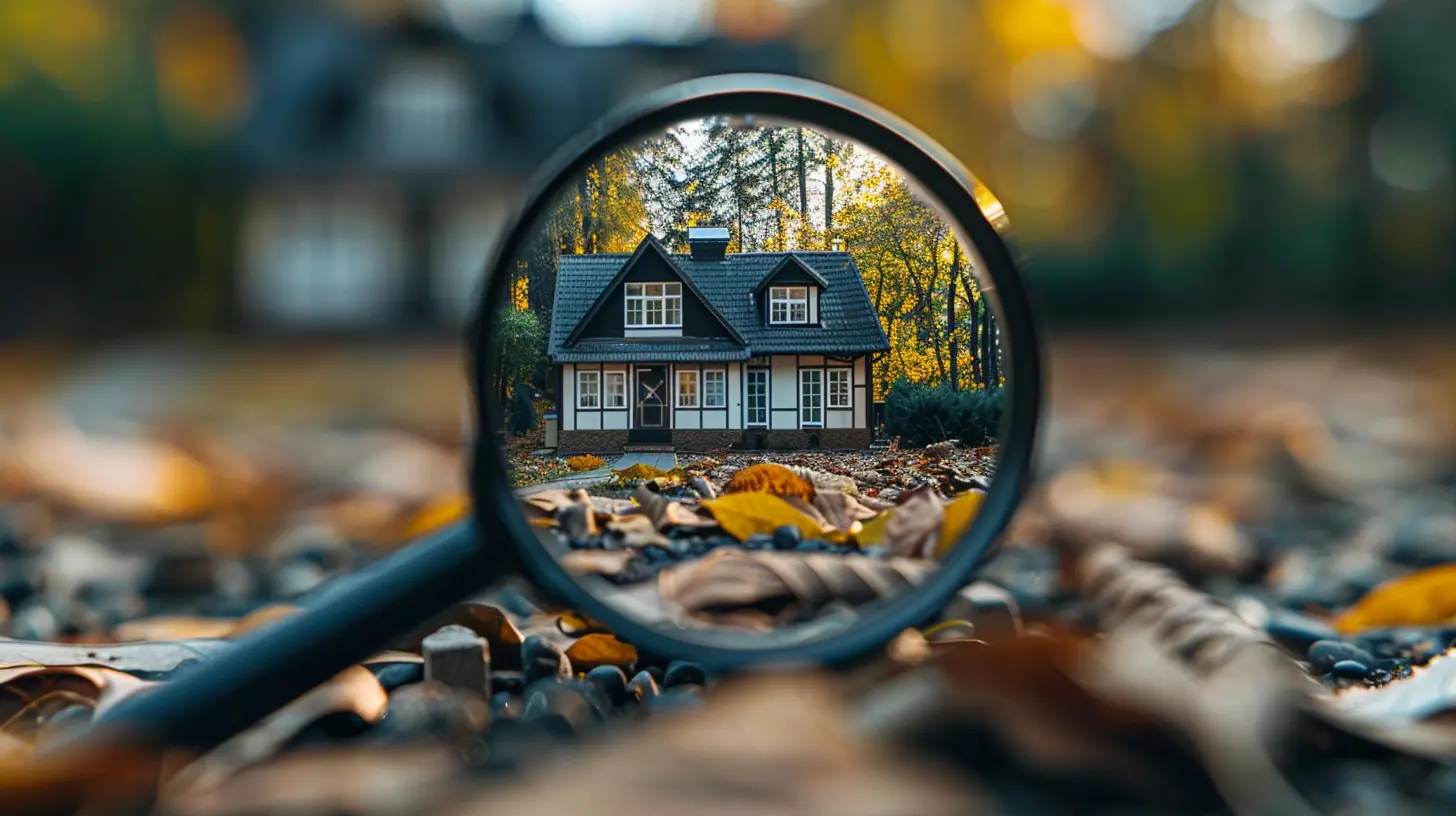Asbestos, Lead Paint, and Older Homes: What an Inspection Reveals
12 January 2025
Buying an older home comes with its fair share of charm—think classic architecture, intricate woodwork, and that old-world vibe that new builds just can’t replicate. But, let’s face it, old homes also come with their quirks, and I’m not just talking about creaky floors or retro wallpaper. We’re diving into the more serious stuff: asbestos, lead paint, and what an inspection might uncover about these hidden dangers lurking in the walls of your dream vintage home. Ready to learn more? Let's break it down.
Why Older Homes Might Have Secrets
Ever hear the phrase, “They don’t make them like they used to?” Well, sometimes that’s a good thing. Older homes—especially those built before the 1980s—were constructed with materials and methods that were later flagged as hazardous. Back then, asbestos was the go-to material for insulation, while lead-based paint was the norm for adding a durable (and colorful) finish to walls. It wasn’t until decades later that we started to understand the health risks related to these materials.But here’s the kicker: just because these materials are dangerous doesn’t mean they’re always a problem right away. That’s where an inspection swoops in like a superhero to save the day.
The Role of a Home Inspection
When you’re buying a home, an inspection is your first line of defense against hidden hazards. Think of it like getting an annual check-up, but for your house. The inspector’s job is to uncover issues that might not be obvious at first glance. For older homes, this often means looking for asbestos and lead paint—two materials that are sneaky, silent, and seriously harmful when disturbed.So how does the inspector do it? They don’t just walk around with a flashlight and a clipboard shouting, “Aha!” They’ve got tools, tests, and years of training to help them uncover the stuff you’d never notice on your own.
What Exactly Is Asbestos?
Let’s start with asbestos. Picture tiny, fire-resistant fibers that were once considered magic in the construction world. That’s asbestos in a nutshell. Back in the day, builders loved this stuff because it was cheap, durable, and great for insulation. You’d find it in ceilings, floors, pipes, and even siding.But here’s the plot twist: when those fibers get disturbed—say, during a remodel or when the material starts to deteriorate—they can become airborne. If you breathe them in, you’re putting yourself at risk for some serious health issues, like asbestosis, lung cancer, or mesothelioma (a rare cancer tied directly to asbestos exposure). Scary, right?
Where Asbestos Hides
- Popcorn Ceilings: Those bumpy, textured ceilings from the ’60s and ’70s? There’s a good chance asbestos is hiding in there.- Floor Tiles: Vinyl tiles (and the adhesive used to stick them down) are common asbestos culprits.
- Insulation: Homes built before the mid-1980s may have asbestos lurking in pipe or attic insulation.
- Roofing Materials: Shingles and siding could also contain asbestos.

The Deal with Lead Paint
Alright, let’s talk about lead paint. Imagine a toddler with a handful of crayons—now imagine that toddler chomping down on some lead paint chips. I know, gross and dangerous. Lead-based paint was banned in the U.S. in 1978, but homes built before then are likely to have at least some traces of it, especially under layers of newer paint.Why’s it so bad? Lead is toxic, particularly for kids and pregnant women. It can cause all sorts of health issues, from developmental delays and learning disabilities to kidney damage. And unlike asbestos, which is mostly a problem when disturbed, even small amounts of lead dust can be harmful.
Signs of Lead Paint
- Chipping or Peeling Paint: If you see paint flaking off around windowsills, doors, or trim, lead might be hiding underneath.- High-Traffic Areas: Lead paint often lurks in places where frequent movement wears it down, like stair railings or door frames.
What an Inspection Reveals
So, what does an inspection actually uncover about asbestos and lead paint? First, let’s clear something up: a home inspection isn’t the same as testing for these hazards. Most home inspectors will point out potential problem areas that merit further testing, but they won’t scrape paint or grab samples from your attic—specialized environmental testing is usually required for that.Asbestos Inspections
An asbestos inspection typically involves collecting samples from areas where asbestos is suspected—think insulation, ceilings, or ductwork. These samples are sent to a lab for analysis. If asbestos is confirmed, you’ll need to bring in a pro to handle removal or encapsulation (a process that seals the asbestos so it can’t release fibers).Lead Paint Testing
Lead paint testing is a bit simpler. Inspectors can use an XRF (X-ray fluorescence) analyzer to detect lead levels without even touching the paint. Another option? Sending paint chips to a lab, which is often done during a renovation project.What Happens If Hazardous Materials Are Found?
Okay, so the inspection comes back, and the results aren’t what you’d hoped. Don’t freak out just yet. Finding asbestos or lead paint in an older home isn’t a dealbreaker—it’s just something you need to address.For asbestos, a professional abatement company can safely remove or encapsulate the material. It’s not cheap, but it’s 100% worth it for your health and peace of mind. As for lead paint, the solution could be as simple as repainting with lead-free paint or as intensive as removing old layers entirely.
Pro Tip: Always hire licensed and trained professionals for removal. DIY remedies might save you some cash upfront, but they could cost you big time in health risks.
Tips for Buyers of Older Homes
If all this talk about asbestos and lead paint has you second-guessing that charming old Colonial, don’t worry. Here are some practical tips to help you make an informed decision:1. Schedule a Thorough Inspection: Hire an inspector who has experience with older homes and isn’t afraid to look at the nitty-gritty.
2. Ask for Specialized Testing: If red flags pop up during the inspection, invest in specialized asbestos and lead paint testing.
3. Negotiate Repairs: Use the inspection results as a negotiation tool during the home-buying process. Sellers might agree to cover the cost of removal or abatement.
4. Budget for Fixes: If you’re head-over-heels for the home, make sure you’ve got some extra cash set aside for potential remediation work.
5. Educate Yourself: Knowledge is power, right? Learn as much as you can about the risks and safe handling of these materials.
Wrapping It Up
Sure, older homes might have a few skeletons in their closets (or asbestos in their ceilings), but that doesn’t mean they’re off the table. A detailed inspection can reveal what’s hiding behind that charming exterior, giving you the info you need to make a smart decision. Think of it as peeling back the layers of the home’s history—what you find might just make you appreciate it even more.Whatever you do, don’t skip the inspection. It’s like shining a flashlight into the unknown—because the last thing you want is for a hidden hazard to come back and haunt you years down the road.
all images in this post were generated using AI tools
Category:
Home InspectionsAuthor:

Mateo Hines
Discussion
rate this article
15 comments
Derek Price
“Ah, the charm of vintage homes! Who wouldn’t want a delightful blend of asbestos and lead paint with their character? Nothing says ‘home sweet home’ like a daily dose of nostalgia and potential health hazards!”
February 3, 2025 at 3:18 AM

Mateo Hines
Thank you for your humorous take! While vintage homes have character, it’s crucial to address the health risks associated with asbestos and lead paint. Inspections can help ensure safety while preserving the charm.
Arwenia Conrad
Great article! It’s so important to stay informed about potential hazards in older homes. With thorough inspections, we can ensure safety while preserving the charm of these beautiful properties. Knowledge is power—happy house hunting, everyone! 🏡✨
January 27, 2025 at 5:42 AM

Mateo Hines
Thank you for your thoughtful comment! I'm glad you found the article valuable—staying informed truly is key to preserving both safety and charm in our homes. Happy house hunting! 🏡✨
Selene McFarlane
This article highlights crucial insights into the health risks associated with asbestos and lead paint in older homes. It underscores the importance of thorough inspections for informed decision-making in real estate investments.
January 20, 2025 at 8:54 PM

Mateo Hines
Thank you for your feedback! I'm glad you found the insights on asbestos and lead paint risks valuable for real estate decisions. Thorough inspections are indeed vital for ensuring safety in older homes.
Morrow McGowan
Great article! It's so important to be aware of potential hazards in older homes. Regular inspections can truly make a difference in ensuring safety for families. Thanks for shedding light on this crucial topic for homebuyers!
January 19, 2025 at 8:38 PM

Mateo Hines
Thank you for your feedback! I’m glad you found the article useful – awareness and regular inspections are indeed key to ensuring safety in older homes.
Zevin McAndrews
Hidden dangers lurk in the walls of older homes, whispering secrets of the past. What will your inspection uncover? The truth may surprise you.
January 18, 2025 at 7:58 PM

Mateo Hines
Absolutely! Inspections can unveil hidden hazards like asbestos and lead paint, ensuring safety and peace of mind in older homes.
Karina Patel
Navigating the challenges of older homes can feel daunting, but armed with knowledge, you can turn potential hazards into opportunities for transformation. Embrace the inspection process as a stepping stone toward creating a safe and beautiful living space. Your dream home is within reach—let’s make it a reality!
January 17, 2025 at 8:21 PM

Mateo Hines
Thank you for your insightful comment! Embracing the inspection process is indeed crucial in transforming older homes safely and beautifully. Let's prioritize safety while realizing our dream spaces!
Avianna Acevedo
Great article! It's crucial for homeowners and buyers to understand the risks of asbestos and lead paint in older homes. Regular inspections can ensure safety and help in making informed decisions. Investing in thorough assessments not only protects health but can also enhance property value in the long run.
January 17, 2025 at 5:45 AM

Mateo Hines
Thank you for your thoughtful comment! I'm glad you found the article valuable. Regular inspections are indeed essential for safety and informed decision-making in older homes.
Olympia Vasquez
A thorough inspection is essential for older homes to uncover hazardous materials like asbestos and lead paint, ensuring safety and compliance.
January 16, 2025 at 1:41 PM

Mateo Hines
Absolutely! A thorough inspection is crucial for identifying hazards in older homes, safeguarding health and ensuring compliance with safety regulations.
Violet McEvoy
Understanding asbestos and lead paint risks in older homes is crucial. Thorough inspections ensure safety and informed decisions for potential buyers.
January 15, 2025 at 12:45 PM

Mateo Hines
Thank you for your comment! You're right—awareness and thorough inspections are key to ensuring safety in older homes.
Otto McCollum
This article highlights the critical importance of inspecting older homes for hazardous materials like asbestos and lead paint. Understanding these risks not only ensures safety but also affects property value and potential renovation plans. Prioritize thorough inspections for informed decisions.
January 15, 2025 at 5:48 AM

Mateo Hines
Thank you for your insights! Thorough inspections are indeed essential for safety and informed decision-making regarding older homes.
Indigo McNaughton
Thank you for shedding light on such an important topic. Understanding the risks of asbestos and lead paint in older homes is crucial for homeowners and buyers alike.
January 14, 2025 at 12:06 PM

Mateo Hines
Thank you for your feedback! I'm glad you found the topic important—awareness is key for homeowners and buyers.
Melody McClendon
This article highlights the critical importance of inspecting older homes for hazardous materials like asbestos and lead paint. Understanding these risks not only protects health but also aids in making informed decisions for homebuyers and investors. Great insights!
January 13, 2025 at 11:45 AM

Mateo Hines
Thank you for your insightful comment! I’m glad you found the article informative; ensuring the safety of older homes is indeed crucial for both buyers and investors.
Gemma Wilkerson
Understanding the risks of asbestos and lead paint in older homes is crucial. A thorough inspection not only protects health but also preserves the property's value.
January 13, 2025 at 3:52 AM

Mateo Hines
Thank you for emphasizing the importance of inspections! Addressing asbestos and lead paint not only protects health but also maintains property value.
Abram Vaughn
Essential insights on hazardous materials in older homes—must read!
January 12, 2025 at 9:06 PM

Mateo Hines
Thank you! I'm glad you found the insights valuable. Safety first when it comes to older homes!
Kara McGuffin
Great insights! Understanding these issues is crucial for safe homeownership. Keep it up!
January 12, 2025 at 5:04 AM

Mateo Hines
Thank you! I appreciate your feedback and support on this important topic!
MORE POSTS

The Role of AI in Creating Smarter Homes

The Future of Real Estate: Virtual Staging and Augmented Reality

What to Know About Buying Property Out of State

How Smart Technology is Changing Urban Real Estate Markets

Open Shelving: A Trend that Combines Style with Function

Common Rental Scams on Popular Real Estate Platforms

The Do’s and Don’ts of Virtual Staging in Real Estate Marketing

How to Avoid Common Pitfalls When Selling Your Home

How Scammers Exploit Real Estate Open Houses

Why Home Buyers Prefer Virtually Staged Listings